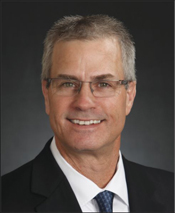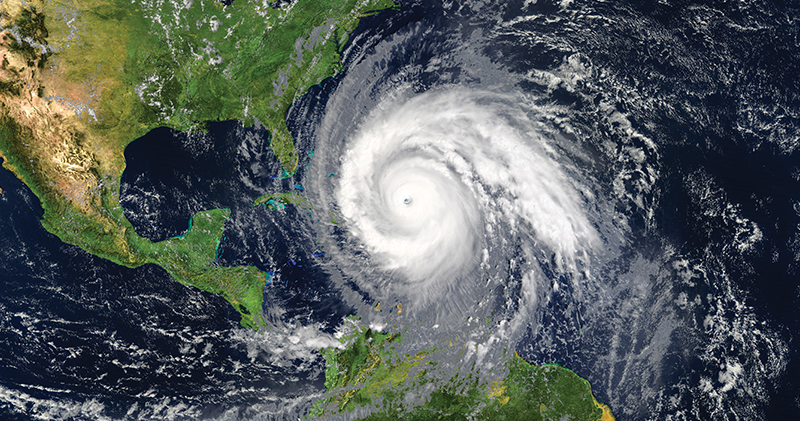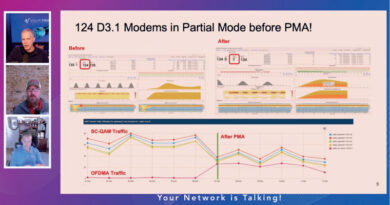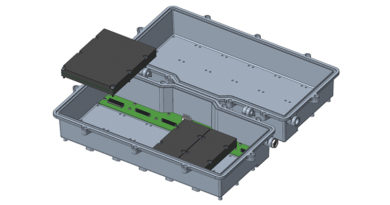The Technologies of Operational Preparedness
Dorian. Harvey. Hugo. Irma. Katrina. Maria. Michael. Sandy. If you were in the path, you remember these storms. If your work is to keep your customers and employees safe and connected during fires, floods and storms, you remember them, too.
I’m writing this at the midpoint of the 2019 hurricane season, which seems a useful time to reflect upon what operational readiness really means when it comes to storm- or disaster-related prep, impact, and recovery. Over the decades, I’ve weathered (pardon the pun) probably 20 major storms. From those experiences, I’ve learned that they have some things in common — starting with the fact they’re all different. Each hurricane, each fire, each flood is slightly unique and, therefore, comes with its own unique set of challenges.
Take one of 2019’s big hurricanes-so-far: Dorian. At the outset, we thought the state of Florida was going to be in the eye of the storm. Instead, we took some hits in the Carolinas, and Florida was comparatively fine. Or 2018’s Hurricane Michael, which came in hard and fast, devastating panhandle communities in a matter of about 30 minutes. Or Harvey, a Cat-4 storm that dropped nearly 50 inches of rain on Houston.
Because they’re all different, disasters represent distinct learning experiences. Over the years, as operators and as an industry, we’ve collected those learnings, by way of playbooks and procedures — and most importantly through the remarkable category of humanity that is our people. People who think nothing of foregoing sleep to chainsaw a tree off of a road. Or of alerting a competitor to a downed wire. Or working for three days straight, powered by protein bars.
This column is an attempt to impart those learnings, as well as some of the technologies we’re seeing that look promising for operational readiness purposes. The following is a short list of tactics that we deploy during or after a storm or disaster while working to restore services:
- A national fuel partnership. It’s so important to get petrol to our fleets, even (and especially) when certifications are required to make sure first responders can get into the storm zone as soon as law enforcement clears them for entry.
- A “Wi-Fi on Wheels” program where needed, to get local residents connected until mobile/carrier connectivity can be restored
- A program that lets local residents power their devices in Xfinity stores
- Leverage the power of Xfinity Stream for customers to view channels including local news that allows them to monitor the impact of the storm
- Open up Xfinity Wi-Fi hotspots in affected areas so that all local residents and first responders can stay connected during and after the storm
- The Xfinity outage map can show customers where outages remain and what their estimated time of resolution is. Customers can also sign up for resolution alerts.
As for new technologies we’re seeing that look promising for operational readiness activities: One is an app, developed internally, that we call “Beacon.” It’s designed to give our field technicians and engineers a way to document (with their phone’s camera) and log infrastructure impairments, such that restoration activities can be prioritized. That same app is being adapted to also play a key role in infrastructure locations in some U.S. states.
That’s a short walk through the landscape of operational readiness, here in the heart of hurricane season. The bottom line is that while technology is great, and useful, and developing in ways that will help us all — the real power is in our people. I am so proud of the commitment our employees and industry partners have to our customers and our communities during these challenging situations. Here’s to every single one of you.

Ed Marchetti
Senior Vice President,
Operations, Comcast
Ed Marchetti oversees technical operations, workforce operations, network operations, technology and tools, communications, data/analytics and the customer/tech experience. With more than 30 years of telecommunications and information industry experience, Ed offers fresh perspective and strategic direction for operational excellence and inspires excellence, goals attainment and operational success. Ed is a graduate of Comcast’s Executive Leadership Forum and has completed the SCTE•ISBE Leadership Institute at Tuck Executive Education at Dartmouth. Ed also serves on the SCTE•ISBE Board of Directors and is co-chair of the Program Committee for SCTE•ISBE Cable-Tec Expo 2020, Oct. 13-16 in Denver.
Shutterstock




